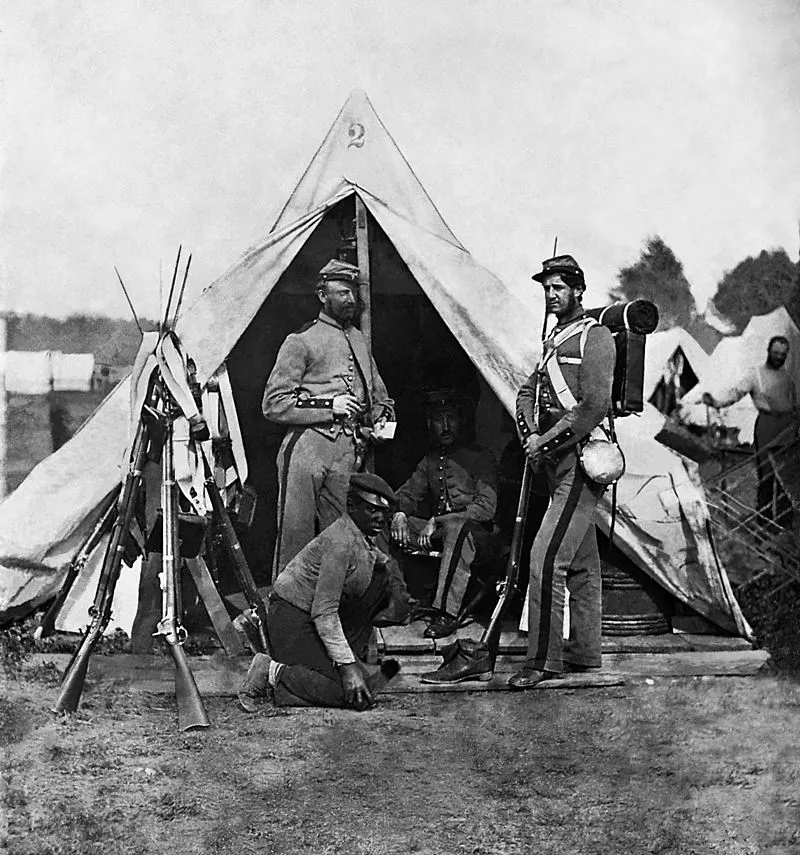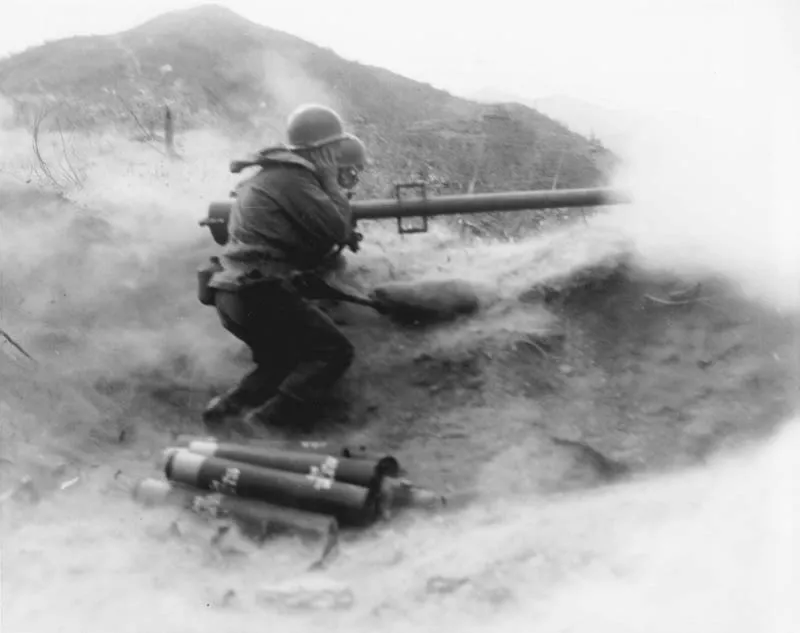The "Cottonbalers" Regiment: 7th U.S. Infantry

The 7th United States Infantry Regiment possesses an illustrious history as one of the five oldest continuously serving regiments in the U.S. Army. Initially organized in July 1798, it was mustered out in 1800, but the regiment was reconstituted in May 1808 by an Act of Congress.
The 7th’s service in the War of 1812 began at Ft. Harrison, Ohio, where future president Zachary Taylor commanded a company, and culminated in its participation in the Battle of New Orleans in Jan. 1815 under the command of General Andrew Jackson. The regiment earned its nickname, “The Cottonbalers”, from its use of cotton bales as defensive works during the battle.
After the War of 1812, the Army went through a series of regimental consolidations. The new 7th Infantry served on the frontier assigned to Ft. Gibson, Arkansas, until 1840. It participated in various actions in Florida during the early 1840s. In 1846, the regiment moved to Corpus Christi, Texas, where it notably participated in the campaigns against Vera Cruz, San Juan and Cerro Gordo during the Mexican-American War.
The 1850s saw the 7th U.S. Regiment removed back to Florida and then reassigned to Jefferson Barracks, Missouri, from which it moved to serve in various frontier and territorial operations, including those in Utah against the Mormons.
As war broke out in the east in the spring of 1861, the military situation in Texas deteriorated similarly, and a series of small actions led to the ignominious surrender of seven of the ten companies of the 7th to local Texas troops. Paroled to Jefferson Barracks, their commanding officer was dismissed the service by President Abraham Lincoln.
In October 1862, the 7th Regiment joined the Army of the Potomac at the outset of the Fredericksburg campaign. The 7th U.S. Infantry was assigned 2nd Brigade, 2nd Division (Brig. Gen. George Sykes) of the 5th Corps. When the Army of the Potomac engaged the Army of Northern Virginia in December at Fredericksburg, the 7th U.S. distinguished itself with its defense of the advanced position on the southern side of Fredericksburg, holding a position on the eastern side of Hanover Street. While there, the unit took heavy fire and suffered the heaviest losses of any regiment in their brigade prior to orders to withdraw from the city.
In May 1863, the 7th Infantry Regiment fought in the Battle of Chancellorsville, where the 5th Corps deployed in line on the northside of the Orange Turnpike, taking the crest of the hill (land today owned and preserved by the Civil War Trust) and holding it despite great enemy resistance. The 7th held the position for over an hour before being ordered to retire.

With General Robert E. Lee’s invasion of the North in June 1863, the 7th was with the Army of the Potomac when it went in pursuit. Arriving at Gettysburg on July 2, the division first formed on the north slope of Little Round Top. With the brigade, the regiment advanced across Plum Run toward the Wheatfield. The 7th received orders to wheel left and advance into the woodline to relieve hard pressed Union defenders. But, as the situation deteriorated, the brigade received orders to withdraw. During that movement, the Cottonbalers came under fire from three directions. Though they managed to reach safety on Little Round Top, the 7th lost slightly over 50 percent of its combat strength.

After the Gettysburg Campaign, the 7th received orders to New York City in response to the draft riots. The regiment remained there on garrison duties until the conclusion of the war.
The early Reconstruction years saw the 7th serving in Florida, but it then transferred to Montana, stationed at Fort Shaw. Post-war duties included protection of surveying expeditions and Indian suppression, notably the rescue of Major Marcus Reno’s survivors of the 7th Cavalry’s disastrous campaign at the Little Bighorn. Later, the regiment was transferred several times, serving at Ft. Snelling, Minn., and at Ft. Logan in Colorado against the Utes.
During the Spanish-American War, the 7th Infantry Regiment served in Cuba, fighting at El Caney and San Juan Hill, then being deployed to help put down the Philippine Insurrection at Samar and Luzon.
In World War I the regiment deployed to France as part of the newly formed 3rd Infantry Division, where it participated in the Aisne, Chateau-Thierry, and Champagne-Marne Defensives, before seeing offensive actions at Aisne-Marne, the Meuse-Argonne and St. Mihiel. For the regiment’s distinctive action, it received the French Croix de Guerre with Star.
The 7th Infantry Regiment then saw extensive service in World War II, deploying early on in 1942’s assault on Morocco. They went on to serve across North Africa into Sicily and Italy, up through France, and then participating in the capture of Berchtesgaden.
Following World War II, the regiment deployed to join the 3rd Infantry Division in Korea. The 7th fought and met with success until contact with Chinese Army units resulted in United Nations positions being overrun. It then helped open and maintain a route of retreat for U.N. forces to evacuate by sea from the Port of Hungnam. The Cottonbalers were the last unit out of Hungnam on Dec. 24, 1950, leaving for Puson, where they joined the 8th Army and fought until a truce was signed in Korea, returning to Ft. Benning, Ga.

In Vietnam, the 3rd Battalion of the 7th U.S. Infantry served four years with the 199th Infantry Brigade. After Vietnam, the Army assigned 2nd and 3rd Battalions of the regiment to the 24th Infantry Division, stationed at Ft. Stewart in Georgia. 1st and 4th Battalions became part of the 3rd Infantry Division, stationed in Germany. In those formations, the 7th deployed to Saudi Arabia for Desert Shield in the 1990s. The four battalions played key roles in the ground war phase of Desert Storm.
In the 1990s, the 24th Infantry Division was reorganized as the 3rd ID, retaining the 2nd and 3rd Battalions of the Cottonbalers. Those battalions were at the fore of Operation Iraqi Freedom in 2003-2009, completing four deployments.
Since then the 7th Infantry has participated in Operation Enduring Freedom in Afghanistan and then in Operation Atlantic Resolve in Europe.
Related Battles
12,500
6,000
17,304
13,460
23,049
28,063






